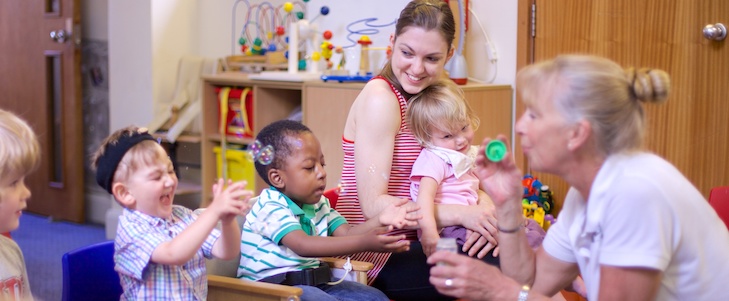
In this blog, we describe a new project beginning at the CEN looking at the evidence for what interventions work best for pupils with special educational needs and disabilities (SEND). The project is called MetaSENSE, because the full title is pretty long: Raising educational outcomes for pupils with special educational needs and disabilities: A meta-analysis and identifying barriers to change (MetaSENSE)
Why is the project important?
Although previous systematic reviews have examined what works for those with SEND5,6,7, they have not considered the different tiers used in educational services8 and have not separated good quality teaching or universal instruction (Tier 1) from targeted interventions. Targeted interventions can be highly individualised (Tier 3) or not (Tier 2) but include evidence-based interventions or instruction (e.g., Lego Therapy or Colourful semantics) delivered by a trained adult who needs to adhere to the fidelity of the intervention. Targeted interventions are only prescribed to pupils who struggle beyond what can be provided within the regular classroom at classroom level. According to recent figures, this applies to 1,318,300 pupils. Pupils who are most likely to require targeted intervention support include those with Speech Language and Communication needs (23.4%), Moderate Learning Difficulties (22.8%), Social, Emotional and Mental Health needs (18.1)%), and Specific Learning Difficulty (14.9%).
What will the new project do?
The current study will synthesise evidence of what works to raise educational outcomes across different pupils with SEND aged 4 to 25 in a systematic review followed by a meta-analysis (phase 1). In addition to analysis of the quality of the evidence base, this meta-analysis will, for the first time, inform which interventions work best (i.e., largest effect sizes) in relation to different phases of education (preschool, primary, secondary, post-16) and different educational contexts (special vs mainstream) for each category of SEND needs. This will provide greater insight into whether support should be specific or can be generalised across different groups of SEND needs.
This information will be of use to teachers, SENCos, school leaders, and educational psychologists in terms of making provision more effective and cost-effective if provision can be used across different groups of SEND needs. Knowledge of what works for which groups of SEND needs and in which contexts also provides insight into cognitive mechanisms that are important to improving educational outcomes in different SEND groups and this will be of interest to academics and professionals who wish to develop new targeted interventions. As the systematic review will highlight gaps in the research evidence, this will set the future research agenda and be of interest to academics and research funding bodies.
In a second phase of the project, the team will carry out some in-depth interviews with educational professionals to dig into how they select different educational approaches to use, as well as the barriers that they face in implementing the most effective practices highlighted by the first phase.
What will the project produce?
The team will then put together a toolkit featuring a database that can inform practitioners about the evidence-base underpinning different interventions for pupils with SEND and which interventions to select in different context according to the pupils’ needs. The goal is to allow parents, educators, specialist professionals and policymakers to make evidence-informed decisions about how to raise educational outcomes for those with SEND in cost-effective ways and inform the future research agenda of academics and relevant funders.
Who’s on the team and who are our funders?
The project team includes several members of the CEN including: Dr Jo Van Herwegen (PI), Professor Chloe Marshall, Dr Rebecca Gordon and Professor Michael Thomas as well as Professor Julie Dockrell and Thomas Masterman.
The project has been funded by the Nuffield Foundation, but the views expressed are those of the authors and not necessarily the Foundation. Visit www.nuffieldfoundation.org or https://www.nuffieldfoundation.org/project/raising-educational-outcomes-for-pupils-with-sen-and-disabilities
All study materials including review, interview and coding protocols will be made accessible via the Open Science Framework.
You can find more detail about the project here.
References
- DfE, June 2021: https://explore-education-statistics.service.gov.uk/find-statistics/special-educational-needs-in-england#releaseHeadlines-dataBlock-tables
- Masters, G. N., et al. (2020). Ministerial Briefing Paper on Evidence of the Likely Impact on Educational Outcomes of Vulnerable Children Learning at Home during COVID-19. Australian Government Department of Education, Skills and Employment. https://research.acer.edu.au/learning_processes/24
- Department for Education and Department of Health (2015). Special educational needs and disability code of practice: 0 to 25 years. Available at: https://www.gov.uk/government/publications/send-code-of-practice-0-to-25
- Gini, S., et al. (2021). Neuromyths about neurodevelopmental disorders: Misconceptions by educators and the general public. Brain Mind and Education.
- Davis, P. & Florian,. L. (2004). Teaching Strategies and Approaches for Pupils with Special Educational Needs: A Scoping Study. Brief No RB516 (London: DfES). Available online at: www.dfes.gov.uk/research/data/uploadfiles/RB516.doc
- Carroll, J., et al. (2017). SEN support: A rapid evidence assessment. UK Government (Home Office). https://www.gov.uk/government/publications/special-educational-needs-support-in-schools-and-colleges
- Cullen, M. A et al (2020). Special Educational Needs in Mainstream Schools: Evidence Review. London: Education Endowment Foundation. The report is available from: https://educationendowmentfoundation.org.uk/public/files/Publications/Send/EEF_SE ND_Evidence_Review.pdf
- Ebbels, S.H., et al. (2019), Evidence-based pathways to intervention for children with language disorders. International Journal of Language & Communication Disorders, 54, 3-19. https://doi.org/10.1111/1460-6984.12387
